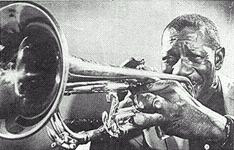
*********************************************************************
memo
Date: 1/8/01
To: Carla Bertoncino
From: Ted Unseth
RE: Turin
Just a note to say that I enjoyed my last trip to Turin. I bumped into several of your associates who handed me the enclosed.They wanted to be sure that you're 'up' on all the new phrases.
Ciao, baby,
Ted
====================================
An Annotated Criminal Slang Dictionary
[modified from "Vocabolari 'dla Mala", Torino, 1989]
The following list is but a small portion of the expressions used by the Turin criminal underworld. (La Mala, literally "The Bad One") through the years. The terms listed are the most general and (probably) the most useful to add a bit of colour to a Turin-based campaign. Words with a (*) are not restricted to the underworld, and are informally of general use among the population. Whenever possible a translation of the slang term has been provided. A note on pronunciation: Piedmontese is closely related to French, and therefore a French pronunciation of the following expressions might help to approximate the actual sounds.
--------------------------------------------------------------------------------
Italian Slang English
Ammattire bate le cuerce * Get Crazy
(to clang on pails)
Ammazzare barbé le ghete * Kill
(to steal the spats)
Arma tagliente sacagn Cutting implement
Arrestare beive (to drink) Grab/Arrest
Assassino sassin * Assassin
Aver Freddo pernisé (to stew) Get Cold
Beghina pepia * Bigot
Bello gansso Good
Bere cirì Drink
Bifolco barot * Redneck
Bisticciare botalé, cioché * Quarrell
Bocca gaiofa * Mouth
Borsaiolo pinsa (pliers) Pickpocket
Cane taboj, tabo Dog
Capo capataz Boss
Carabinieri fratelli branca Carabinieri
(famous distillery),
caramba, cagna (bitch)
Cimitero camp ed coj (cabbadge patch) Graveyard
Coltellata botonera (buttonhole) Knife Wound
Confidente canarin (canary) Police Spy
Debito gancio (hook), puf Debt
Delinquente brut (ugly) Criminal
Evitare schiné * To Avoid
Fabbrica boita * Factory
Ferire sacagné Hurt
FIAT la feroce (the fierce)* FIAT
Filar Via pedalé (to pedal) Run away
Fortuna cul (bottom), * Luck
paracqua (umbrella)
Furbastro falabrach * Smartass
Furto 'l ciòch (the mess) Robbery
Giornale busiarda (liar) * Newspaper
Gruppo chiassoso maraja Noisy group
Imbroglione zanzibar Con-man
Informazione drita (straight one) Information
In gamba en piota "On the ball"
Ladro grata (scrathcer) Thief
Lavorare ponté (to push), * To Work
Rusché (to scratch)
Lento/Pigro gargh * Slow/Lazy
Mangiare lapé, pité Eat
Mangiare a sbafo spòrze la gheuba To scrounge a meal
(show the bump)
Manicomio balengheria, Sanitorium
Babi (toad)
Mano pinsa (pliers) Hand
Manrovescio torcet( a hard biscuit) Slap
Matto gabia (cage), sonà(ringing), Crazy
garola
Mercato nero sciangai Black market
Morire saré ij ante * To Die
(to close the blinds)
Mussolini pera o oli (stone or oil) Mussolini
Ceruti (Mr Smith)
Nascondere ' pianté (to plant) To hide
Notte la bruna (the dark one) Night
Operaio FIAT barachin (lunch pail) * FIAT worker
Osteria tanpa (pit), piola * Ale house
Pagnotta grola * Bread loaf
Palo la cioca (the bell), Lookout
la nona (the granny)
Passaggio armari a mur (wall closet) Secret passage
Pedinare tapiné To track
Perquisire fogné, fe le pules To search
(to look for fleas)
Picchiare onse (to oil), To Beat
passé 'l buì (to offer dinner)
Pistola tron (thunder), canon, Gun
sciopet(blunderbuss)
Polizia pola (chick), madama (the Lady) Police
la giusta (the Right One)
Portafogli 'l quai (ulcer) Wallet
Postribolo el ciabot (the shack) Whorehouse
Prete cornajass (crow) Priest
Prigione stildo Jail
Raggiro bidon(barrell) * Swindle
Rapina la dura (the Hard One) Robbery
Refurtiva arponcia The booty
Robivecchi feramiù * Ragman
Rubare graté(to scratch), To steal
Cacé (to hunt), berliché (to lick)
Sacco di Botte volpin (a fox coat) A severe whack
Sbronza sumia(ape) Noisy drunkenness
Scansafatica fagnan * Lazy man
Sciocco gagio, ciola Fool
Sfortuna sgaro Ill luck
Soffitta colombera (pigeonhole) Attic
Sordido salop Sordid
Spia porta pachet * Spy
(parcel carrier)
Tacere buté berta en sach To be silent
(to put Berta, the Mouth, in the sack)
Truffa bidun (barrell), pachet (parcel) Swindle
Truffatore ` bidunista (barrel maker) Swindler
gabolista
Ubriacatura piomba (the Leaden One) Quiet drunkenness
Uccidere scursé (to shorten) To kill
Vecchia ciospa * Old woman
Veleno brod d'ondes ore Poison
(the late night soup)
Vestito tapo Suit
Zingaro sinto Gypsy
This text is (C) 1998 by Davide Mana; send comments to doctor.dee@libero.it
--------------------------------------------------------------------------------






















